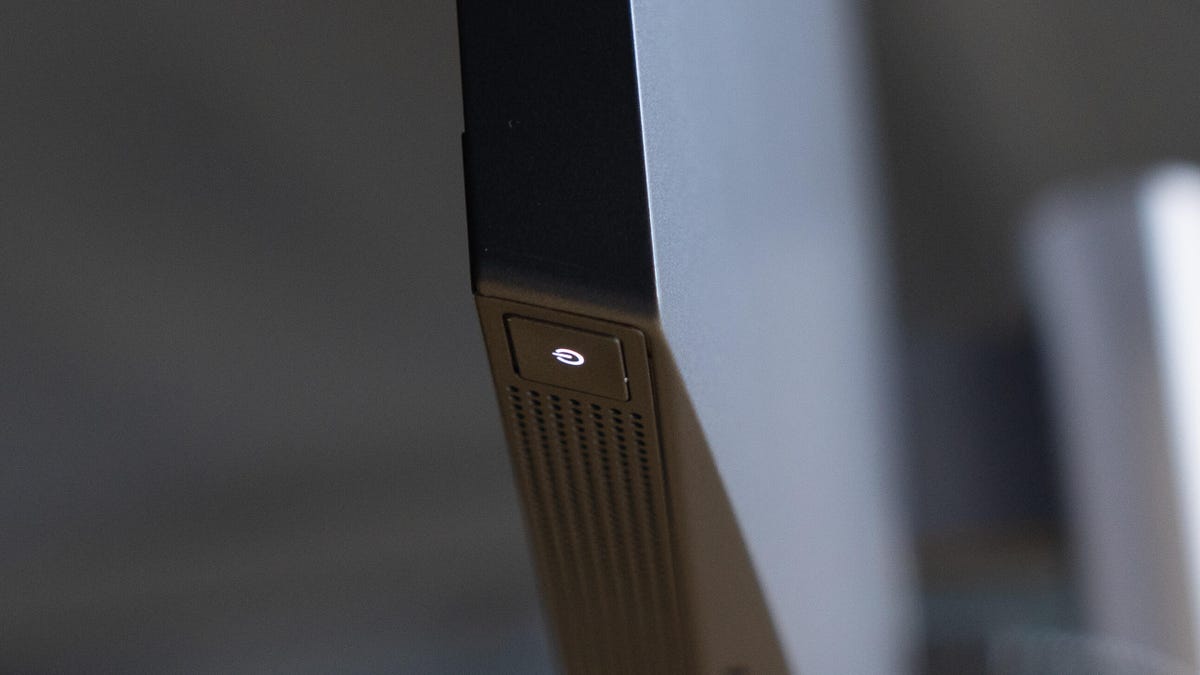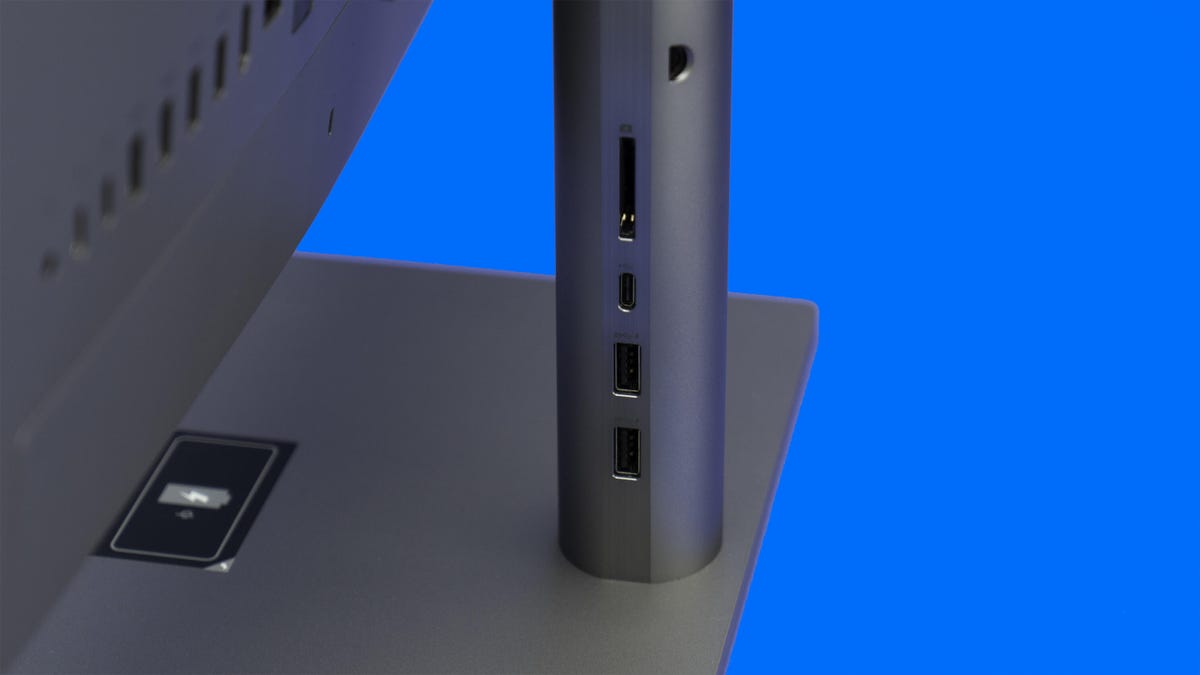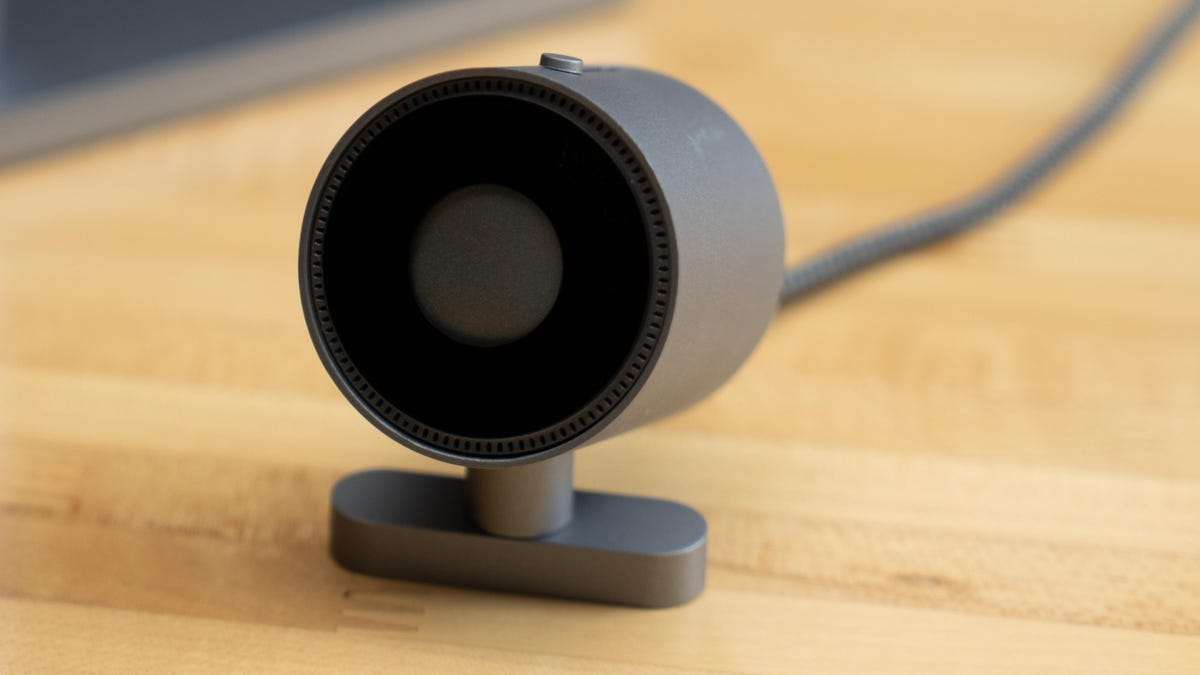Apple abdicated the high-end all-in-one market once dominated by its 27-inch iMac, but no one’s rushed in to fill the gap. Even Microsoft discontinued its 32-inch touchscreen Surface Studio 2. The trend isn’t surprising, given that both the price and size of 24-inch models tends to make them more attractive than the larger models for the type of buyer considering an all-in-one, where speed is usually pretty far down the list of requirements. And if you do want a 27-inch model, there are numerous midrange offerings in Dell’s Inspiron and HP’s Pavilion lines. As the lone remaining premium big-screen option (as far as I can tell), the HP Envy 34 AIO becomes the best choice in that class by default.
But that doesn’t necessarily make it the best buy as a desktop PC. It’s a fine system with a nice 34-inch display and some useful features, like a magnetically attachable webcam and Qi charging pad in the base, but you’re paying for pretty and not performance.
Like
- Attractive design with intelligent layout
- Qi charger in base and detachable webcam
- Easily replaceable/upgradable memory and storage
- Reasonably color accurate, bright display
Don’t Like
- Because of mobile GPU and display configuration, not great for gaming
- No HDR support
- Graphics performance like a laptop
Like a ton of systems these days, our roughly $2,300 test configuration of the Envy 34 AIO (Intel Core i7-11700, Nvidia GeForce RTX 3060 and 16GB RAM) has been going in and out of stock, though at the moment you can find it on Amazon. You can get it with several combinations of CPU, GPU, memory and storage starting at about $1,750 for an i5-11400 and GTX 1650.
If you want more powerful graphics, you can configure it with the RTX 3060, but you may also want to consider simply buying a midrange gaming laptop — some will give you better performance with similar components — and a decent monitor that meets your needs. Or save money by going with something less elegant but faster, like the Dell XPS 8950 tower, and shove it under your desk if you don’t want to look at it.
HP Envy 34 All-in-One
| Price as reviewed | $2,300, £2,300 (not available in Australia) |
|---|---|
| Display | 34-inch 5,120 x 2,160 60Hz; 98% P3, 500 nits |
| CPU | 2.5GHz Intel Core i7-11700 |
| Memory | 16GB DDR4 SDRAM 3,200MHz (4 x SODIMM) |
| Graphics | 6GB Nvidia GeForce RTX 3060 (mobile) |
| Storage | 1TB SSD (capacity 2 x m.2 slots), SD card slot |
| Ports | 3 USB-C (all with DP alt mode; 2 x Thunderbolt 4, 1 x 5Gbps), 5 USB-A (4 x 10Gbps, 1 x 5Gbps), 1 x HDMI (out) |
| Audio | Headset, 2w stereo speakers |
| Networking | 1 x gigabit Ethernet, Realtek Wi-Fi 6 (802.11ax), Bluetooth 5.2 |
| Operating system | Windows 11 Home (21H2) |
Smart Design
The system is well designed overall. That includes an SD card slot, USB-C and two USB-A ports on the stand, a reasonably accessible location, in addition to the host of connectors on the back of the display. There are two watt stereo speakers which are pretty good for their relatively low power output, a slow-ish Qi wireless charging pad on the base and an above-average webcam that connects magnetically to the top of the screen. It comes bundled with a decent wireless mouse and keyboard, though the keyboard doesn’t have a backlight.
You can upgrade the memory and storage relatively easily via a panel on the back, which is also nice. On the flip side, it did take two of us about 20 minutes to find the power button, since it’s hard to see and hard to feel: It’s flat and on the right underside of the monitor bezel.

The power button.
Lori Grunin/CNET
There are no controls for the webcam, such as zoom or exposure compensation, and keep in mind that “16 megapixel binning” translates to a bit higher than 2 megapixels/1080p (2,304×1,292, or about 3 megapixels). The binning allows it to have a serviceable image in near-dark lighting. HP’s lighting application lets you toss up a ring light on the display to improve exposure, and it’s actually a pretty useful app. Because the screen is so large (the software was intended for laptops), the virtual ring light can get bright enough to light up a dark room.
It’s all screen
But the display is really the highlight of the package. It’s based on a similar 34-inch, 5K2K panel as the LG 34WK95U. As tested, it performed very well, above average for a general-purpose display and good enough for non color-critical photo and video editing: maximum brightness of about 550 nits and typically about 350 nits at its default settings, 97% P3 color gamut, an average color error of less than 2 Delta E at its best, about 1,200:1 contrast and no visible uniformity issues.

If the monitor is raised, getting to the connections on the stand is easy. When it’s lowered, it’s a little trickier.
Lori Grunin/CNET
It comes with a display utility that swaps among the most popular color profiles and allows you to map specific profiles to applications to automatically swap on launch. But they’re not true calibrations; they don’t include specific brightness levels or remap out of gamut colors to within the boundaries of the space. Toss in that the white point varies a bit with brightness — it’s about 6700K at the default setting but rises (gets cooler) notably as you increase output, unsurprising given it’s over 500 nits — and that’s why I don’t think it’s good for color-critical work.
You can always perform your own software calibrations, though, which should get it pretty close. (All measurements were taken using Portrait Display’s Calman 2021 software using a Calibrite ColorChecker Display Plus, formerly X-Rite i1Display Pro Plus.)

The webcam has a physical cover for your peace of mind.
Lori Grunin/CNET
But it doesn’t support HDR. While that’s not essential and the specs of the display wouldn’t really do it justice, it’s one of the things you automatically dream of when you see that big, fixed display. You can connect the Envy to another monitor via Thunderbolt or HDMI if it becomes a must-have for you. Keep in mind that like most all-in-ones you can’t use the display like a monitor for another system (in other words, connect two systems to the monitor). Because all-in-ones look like they’re just a monitor, people tend to make the assumption that it can act exactly like one, but that’s a specialty feature.
Sufficient speed
Its performance is good enough for a lot of people, but not up to the level of the equivalent H-series mobile CPUs, and the mobile RTX 3060 GPU underperforms some laptop competitors, partly because the power seems to be capped at 70w (the part can go up to 80w). More frustrating, though, because it uses a laptop architecture the display isn’t on the GPU bus, which I suspect contributes to some frustrations of getting games to run windowed at lower resolutions. The 3060 is a fine GPU, but it’s not intended to run games at passable frame rates in 5K resolution.
That doesn’t mean you can’t, and in fact I had a perfectly fun time playing Stray at the native resolution. And there’s always cloud gaming.
I like the HP Envy 34 AIO, and it certainly feels like a nice home or traditional office system for people who need big screens in a small space. But a laptop with a monitor and dock is a lot more flexible and cheaper in the “you don’t have to buy everything at once” sense, especially if you’re going to spend over $2,000 on a desktop that performs like a laptop.
Geekbench 5 (multicore)
Dell Inspiron 16 Plus (7610)
Note:
Longer bars indicate better performance
Cinebench R23 CPU (multicore)
Dell Inspiron 16 Plus (7610)
Note:
Longer bars indicate better performance
Cinebench R23 CPU (single core)
Dell Inspiron 16 Plus (7610)
Note:
Longer bars indicate better performance
3DMark Time Spy
Dell Inspiron 16 Plus (7610)
Note:
Longer bars indicate better performance
Configurations
| Dell Inspiron 16 Plus (7610) | Microsoft Windows 11 Home; 2.3GHz Intel Core i7-11800H; 16GB DDR4 3,200MHz; 4GB Nvidia GeForce RTX 3050; 512GB SSD |
|---|---|
| Dell XPS 8950 | Microsoft Windows 11 Home; 2.8GHz Intel Core i5-12600K; 16GB DDR5 RAM 4,800MHz; 8GB Nvidia Geforce RTX 3060 Ti; 2TB HDD |
| HP Envy 34 All-in-One | Microsoft Windows 11 Home (21H2); 2.5GHz Intel Core i7-11700; 16GB DDR4 SDRAM 3,200MHz; 6GB Nvidia GeForce RTX 3060; 1TB SSD |
| HP Victus 16 | Microsoft Windows 11 Home; 2.3GHz Intel Core i7-11800H; 16GB DDR4 3,200MHz; 6GB Nvidia GeForce RTX 3060; 512GB SSD |




